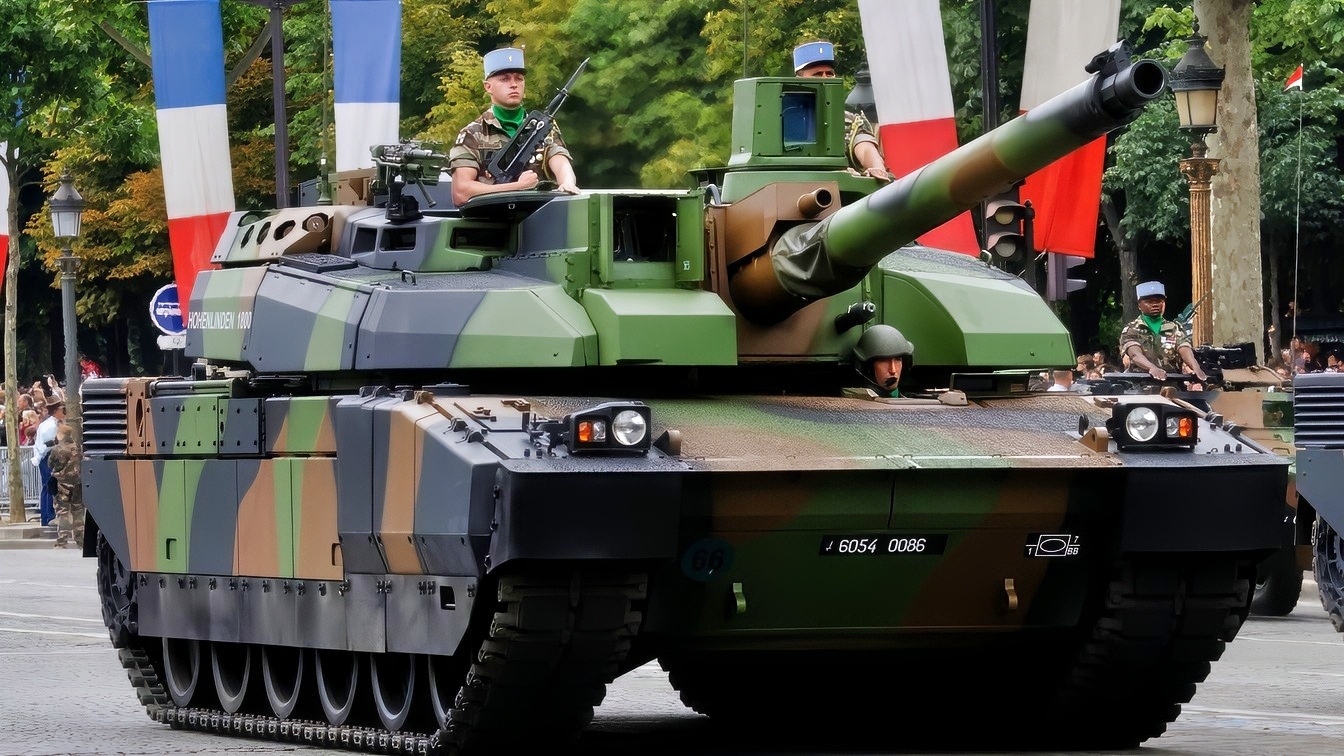Key Points and Summary – The French Leclerc main battle tank was designed not just for its advanced firepower and mobility, but as a symbol of France’s “strategic independence,” with a domestic supply chain.
-While technologically advanced, the tank has seen limited combat, most notably with the UAE in Yemen, where it proved resilient.
-Controversies, including limited export success and a significant leak of a classified manual on a video game forum, have marked its history.
-The Leclerc is now set to be replaced by a joint Franco-German program, a major shift away from the self-reliant philosophy that created it.
France’s Leclerc Tank Is No Tank ‘Joke’
The Leclerc main battle tank (MBT), introduced in the early 1990s, represents the pinnacle of French armored vehicle engineering. Designed to replace the AMX-30, it was developed by Giat Industries (now Nexter Systems) to deliver a highly mobile and heavily armed platform capable of keeping pace with NATO peers.
With its advanced firepower, modular armor, and emphasis on speed, the Leclerc symbolized France’s commitment to maintaining a highly independent and capable defense force. However, the tank’s development and operational history have been marked by controversies and evolving debates about its future.
The French Leclerc main battle tank was designed and developed by Nexter Systems to replace the AMX-30, France’s Cold War-era armored workhorse. Named after General Philippe Leclerc, France’s best-known World War II hero, it aimed to counter the best of the Soviet Union’s armored vehicles.
The French also hoped the Leclerc could hold its own with other Western main battle tanks of the era, like the American Abrams and the German Leopard 2.
The original Leclerc program requirements called for a robust armor protection package that would offer a significant leap over comparable main battle tanks of the era via add-on armor paneling.
Combined with a 120mm main gun comparable with NATO-standard ammunition and high mobility afforded by the tank’s 1500-horsepower engine, the Leclerc offered the French military an attractive option. However, one of its most compelling aspects was its domestic design, supply chain, and home manufacture.
Strategic Independence: Why the Leclerc Tank Matters
Ultimately, however, one of the more attractive aspects of the Leclerc was the fact that it was made at home. By producing the Leclerc in France, Paris could ensure it retrained more control over its design rather than compromising with other countries and their specific tank requirements.
By reducing, if not eliminating, reliance on foreign manufacturers, Paris also took steps to ensure that during times of crisis or other conflict, they could update or upgrade the Leclerc how they saw fit.
One of the controversies surrounding the Leclerc involves a classified manual of the tank leaked on online forums for the War Thunder video game, which, though promptly removed by moderators, signified a significant leak of Leclerc information.
One shortcoming of the Leclerc program, perhaps, has been the tank’s limited success on the export market to other countries, particularly within the Francosphere more broadly, though Jordan and the United Arab Emirates have both opted for importing.
Despite the many positive aspects inherent to the Leclerc design, the French tank boasts precious little combat experience other than peacekeeping missions with the United Nations or in former French colonies.
One exception to the Leclerc’s rather peaceful track record is the United Arab Emirates’s Leclerc deployment to Yemen in 2015 under the auspices of the Saudi Arabian anti-Houthi coalition. Though three Leclercs suffered damage in the fighting against the Houthis, none of them were completely destroyed.
In 2 Words: Already Obsolete?
Despite the Leclerc’s success, progress has already been made on a successor: the Main Ground Combat System (MGCS) program, developed in tandem with Germany. The design is far from finalized.
However, in 2018, KNDS, the group behind the design, revealed a technology demonstrator that mated the hull of the Leclerc with the turret of a Leopard 2, demonstrating that the French and German companies behind KNDS would be able to cooperate on manufacturing a main battle tank.
The MGCS is slated to replace both the French Leclerc and Germany’s Leopard 2 main battle tank in the 2030s.
And while it could benefit from a higher amount of cash than either company could bring to the table by itself, the effort does increase French reliance on other countries for the design — a significant break from France’s historic tank design philosophy.
About the Author: Caleb Larson
Caleb Larson is an American multiformat journalist based in Berlin, Germany. His work covers the intersection of conflict and society, focusing on American foreign policy and European security. He has reported from Germany, Russia, and the United States. Most recently, he covered the war in Ukraine, reporting extensively on the war’s shifting battle lines from Donbas and writing on the war’s civilian and humanitarian toll. Previously, he worked as a Defense Reporter for POLITICO Europe. You can follow his latest work on X.
Military Matters










